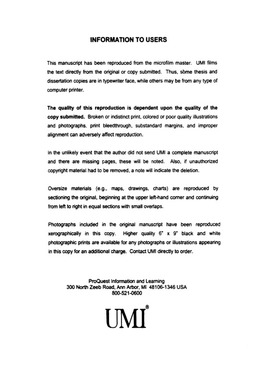| dc.contributor.advisor | Tiab, Djebbar, | en_US |
| dc.contributor.author | Escobar, Freddy Humberto. | en_US |
| dc.date.accessioned | 2013-08-16T12:18:27Z | |
| dc.date.available | 2013-08-16T12:18:27Z | |
| dc.date.issued | 2002 | en_US |
| dc.identifier.uri | https://hdl.handle.net/11244/409 | |
| dc.description.abstract | Because of their flexibility while handling non-orthogonal systems, in this study, PEBI grids, implemented in a commercial simulator were employed to solve the mathematical models. However, it was first necessary to study the use of five PEBI grids to establish their application and limitations. It was found that a circular PEBI grid describes with great accuracy the transient pressure behavior of unfractured vertical wells. Elliptical PEBI grids do the same for fracture vertical wells (including fracture rotation) while any of the PEBI grids works well on horizontal wells. | en_US |
| dc.description.abstract | The Tiab's Direct Synthesis Technique was applied in the above studied cases to analyze pressure test data. The procedure has a major effect in improving the analysis of fractured-well pressure response since it allows us to understand previously unconsidered new scenarios for simulation and modeling. | en_US |
| dc.description.abstract | As far as the fracture-fault system forming an angle of 90 degrees is concerned, the pressure response is characterized by a maximum point in the pressure derivative which takes place once the transient response of the fracture has vanished. This occurs because the fault inhibits the development of the pseudoradial flow regime. If the fault divides the reservoir into two parts of practically same size, the pseudoradial flow regime will never be developed, and instead, a new flow regime here called as semi-pseudoradial is formed. If not handled carefully, this new flow regime can be easily confused with the behavior of a complete reservoir and its analysis will lead to serious errors. As the angle of the fault is reduced from 90 to zero degrees and when fault and fracture conjoin at their tips, the characteristic signature, the "hump, " is less notorious or can be completely absent. The rotation of the fault provides more space for the formation of radial flow then the maximum is diminished. | en_US |
| dc.description.abstract | This study provides new findings in the transient pressure analysis of finite conductivity hydraulically fractured vertical wells, and in particular, the cases of the presence of a hydraulic fracture which possesses a branch and a hydraulic fracture intersecting a sealing fault. | en_US |
| dc.description.abstract | Due to simulator limitations, only a single branch fracture, treated as a horizontal well, was simulated at three different positions along the main fracture and three different angles. New pressure response was found when the branch is attached at the tip of the main branch and no significant effect of the angle was found. The pressure behavior is very similar to cases of fracture asymmetry. | en_US |
| dc.format.extent | xxvi, 407 leaves : | en_US |
| dc.subject | Petroleum Geology. | en_US |
| dc.subject | Engineering, Petroleum. | en_US |
| dc.subject | Hydraulic fracturing. | en_US |
| dc.subject | Oil wells Hydraulic fracturing. | en_US |
| dc.title | Application of PEBI grid simulation to analyze pressure-transient behavior of hydraulically fractured vertical wells. | en_US |
| dc.type | Thesis | en_US |
| dc.thesis.degree | Ph.D. | en_US |
| dc.thesis.degreeDiscipline | Mewbourne School of Petroleum and Geological Engineering | en_US |
| dc.note | Major Professor: Djebbar Tiab. | en_US |
| dc.note | Source: Dissertation Abstracts International, Volume: 62-12, Section: B, page: 5938. | en_US |
| ou.identifier | (UMI)AAI3034892 | en_US |
| ou.group | Mewbourne College of Earth and Energy::Mewbourne School of Petroleum and Geological Engineering | |
